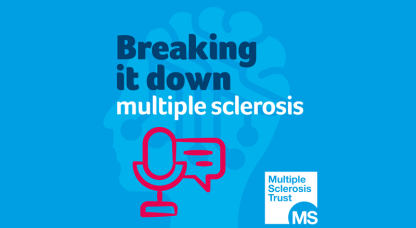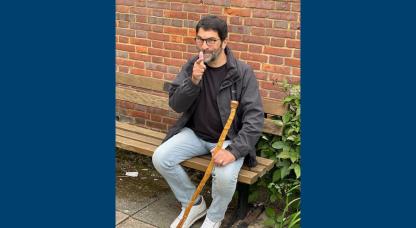This research found that headaches are more common in people with MS than in the general population. It looked in particular at migraine, tension type headache and cluster headaches.
The researchers compared the characteristics of those people with MS who experienced headaches with those who didn't. People who experienced headaches were significantly younger, much more likely to be women and were less impaired in their motor function (the ability to use and control muscles and movements).
People with relapsing remitting MS occurred more often in the headache group whereas those with secondary progressive MS were more often in the non-headache group. The probability of having headaches was also dependent on the medication being taken. In particular, those on glatiramer acetate (Copaxone) were five times more likely to experience headaches.
Headaches come in a number of different forms. This study focused migraine, tension type headache (TTH) and cluster headaches.
Migraine is a pulsating, often one-sided headache which lasts between 4 and 72 hours and is common in the general population. Estimates vary but it occurs in around one in seven to one ten individuals. About one third of these have migraine with aura which is a warning sign before the migraine begins. This advance warning can be visual problems, including flashing lights, and stiffness in the neck, shoulders or limbs.
Tension type headache feels like a continual nagging-pressing pain and occurs in about one third to two thirds of the general population at some time in their life.
Cluster headaches are described as a sharp, sudden, one sided pain which is severe and associated with eye pain. It is much less common in the general population as it occurs in only about four to six people in every thousand.
This study aimed to establish how common these types of headache were in people with MS and what factors made it more likely that someone would experience headaches.
How this study was carried out
125 women and 55 men with MS in Germany were interviewed. None of them had other conditions, such as a brain tumour, which might cause headaches.
Clinical data about their MS, including when their MS began, their EDSS score (a measure of disability) and any medication taken, were recorded. Any headaches were classified according to international guidelines into migraine with and without aura, tension-type headache, or cluster-headache.
General health was assessed using the Short Form 36 Health Survey (SF36) which looks at eight dimensions including physical function, pain, general health, vitality, and social functioning. The Beck's depression inventory (BDI) was used to assess for depression.
The average age of the group was 44 and the average time since the onset of MS was 12 years. Almost half (48%) had relapsing remitting MS, over a third (37%) had secondary progressive MS and just over one in eight (13%) had primary progressive MS. Just three (1.7%) had clinically isolated syndrome.
Members of the group were receiving a wide range of disease modifying treatments with only 12 (7%) not receiving any during the time frame of the study. The average EDSS score was 3.6 although it varied widely.
98 of the 180 people in the study (55%) reported having a headache in the previous four weeks. Out of these, 16 had experienced migraine (2 without aura and 14 with aura) and 23 had experienced a tension type headache but no-one had suffered a cluster headache. The other 59 people were categorised as having suffered an unclassified headache as the characteristics of their headache did not fit with the three categories under study.
The researchers compared the characteristics of those who experienced headaches with those who didn't. People who experienced headaches were significantly younger, much more likely to be women and less impaired in their motor function (the ability to use and control muscles and movements).
People with relapsing remitting MS occurred more often in the headache group whereas those with secondary progressive MS were more often in the non-headache group.
The number of people with headaches varied according to some of the medications they took. Half (51%) of the non-headache group had been treated with corticosteroids but only a quarter (28%) of the headache group had received this treatment. Those with headache were five times more likely to be treated with glatiramer acetate or immunoglobulins.
People without headaches also suffered from less bodily pain and scored better in social functioning but were much more limited physically. Conversely, the lower a person's EDSS score, corresponding to a lower overall level of disability, the more likely they were to suffer from migraine. Those who scored highly on bodily pain were more likely to suffer tension type headaches.
The authors concluded that headaches occur more often in people with MS than in the general population. Headaches occurred more often in younger people with MS and in people on certain disease modifying treatments.
They suggest that headaches may be a more significant part of MS than previously realised.
Möhrke J, Kropp P, Zettl UK.
Headaches in multiple sclerosis patients might imply an inflammatorial process.
PLoS One. 2013 Aug 5;8(8)
Abstract
Read the full text of this paper
In 2012, another study was published about migraine in MS. It pooled the results of eight previous studies and found that migraine was twice as common in people with MS than in the general population.
You can read more about migraine, cluster headaches and tension type headaches on the NHS website. There is also information on other causes of headache.
Headache is a known and common side effect for the disease modifying treatment glatiramer acetate.
If you experience headaches, it can be useful to keep a diary of symptoms and when they occur over two to three months. The Migraine Trust offers tips for keeping a headache diary.
It can be helpful to record information on:
- Severity of the pain
- Warning symptoms
- If there are other symptoms (such as being sick or having vision problems)
- How long the attacks last
- Where the pain is
- Whether the pain is throbbing or piercing
Also, to note down as many aspects of daily life as possible, such as:
- What and when you eat
- Your medication
- Vitamins or health products
- Any exercise you take
- Other factors such as the weather
- For women, the stage of their monthly cycle.
The diary can help a doctor make the correct diagnosis and identify any triggers for your headaches. It can also help in identifying the warning signs of an attack and whether any medication you are taking for your headaches is working.


